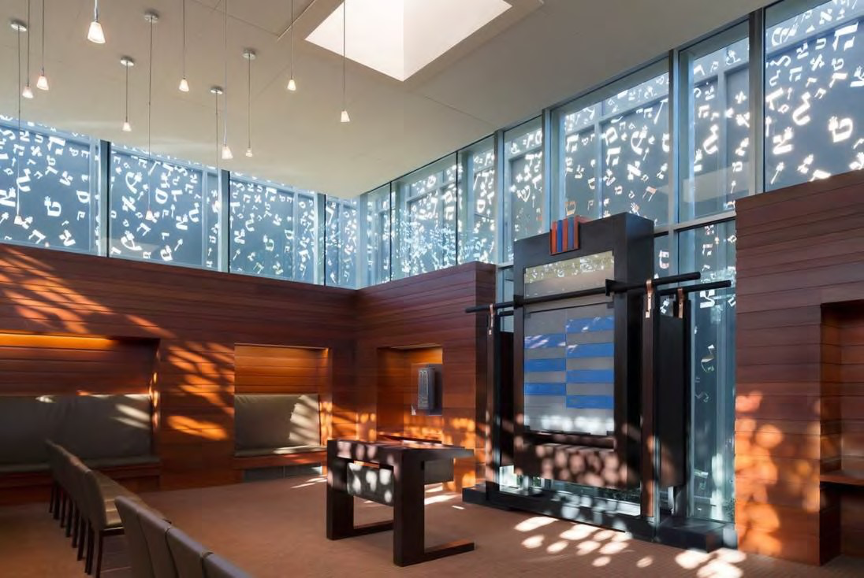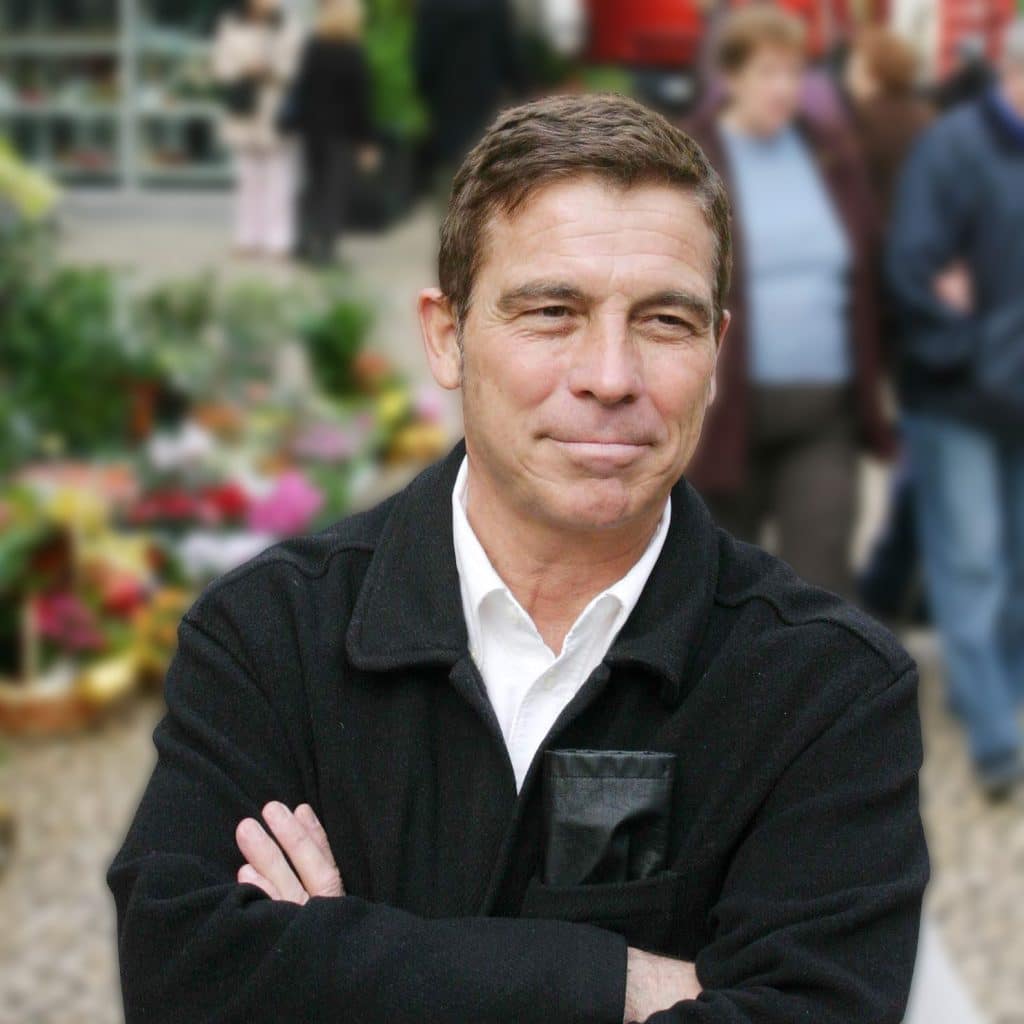Susie Coliver and Amy Reichert
Our session will use our work as architects/designers to communicate the ways in which Judaism can be deployed spatially and visually to provide access to religious experience. By exploring material/craft, light/shadow, gravity/the ephemeral and the human gesture in reinterpreting traditional ideas for a modern world, we will discuss the role of design in spiritual encounter.
Three overarching themes, particular to Judaism but present in some form in many spiritual traditions, provide a framework for exploring these projects: Cyclical Time, Unfolding Ritual, and Embodied Stories.
I. Cyclical Time
Abraham Joshua Heschel talks of an “architecture of holiness” that appears not in space but in time. He suggests that Judaism is a religion of time: it finds meaning not in buildings and the material world, but in time and its cyclical nature, so that “the Sabbaths are our great cathedrals.”1 Our session will explore how material choices, orientation, and craft/form can articulate the marking of Jewish time in the daily, monthly and seasonal cycles.
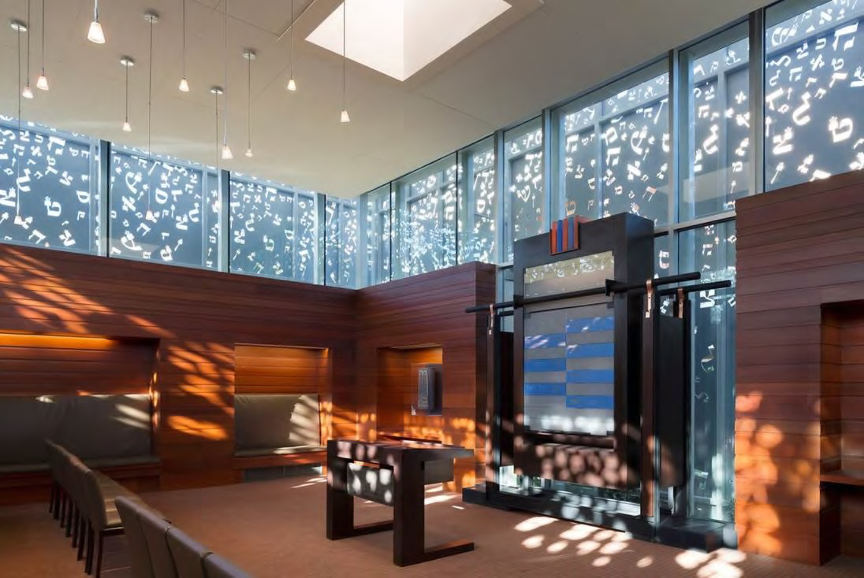
Chapel Interior at sundown, the beginning of the Sabbath / Temple Judea, Tarzana CA, Herman Coliver Locus Architecture
There are key moments in the Jewish year that invite, or indeed, demand our participation in creating sacred space. For example, the commandment to build a sukkah presents us with opportunities to explore encounters with the divine. This is a mitzvah (commandment) that is practiced widely even today among Jewish communities throughout the world. In the Bible, the sukkah is associated with memory, miracles, authority, and community. These associations are elaborated in the Talmud, which is filled with debates concerning the design, symbolism and physical details of this structure that is up for only one week a year. By mining these texts, we can develop sacred spaces that resonate with the richness of tradition, yet speak to us today.
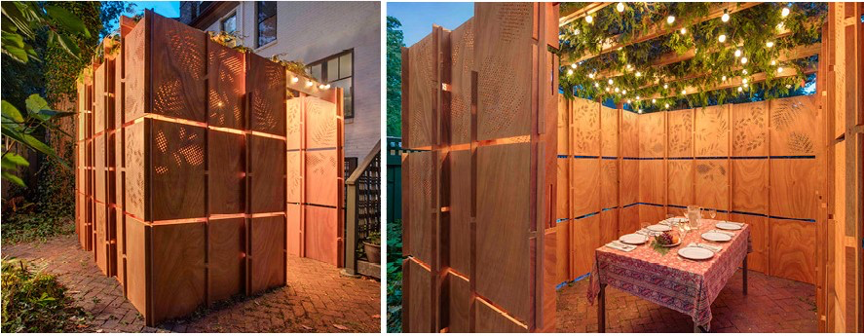
The interlocking panel construction and gaps between layers evoke the fragility of the desert hut with this “House of Cards” Sukkah, Chicago. Perforations in the forms of fruits associated with this holiday create a lantern effect at night. Amy Reichert Architecture + Design
II. Unfolding Rituals
Alongside this cyclical underpinning of Jewish spirituality, we recognize that Jewish ritual unfolds within community. How can architects and designers illuminate aspects of gestures and traditions that have become rote? In the lighting of candles, the opening of doors to the aron hakodesh, even in positioning one’s body relative to the service leader, innovations respectfully challenge tried‐and‐true manners of relating to one another and to the divine.
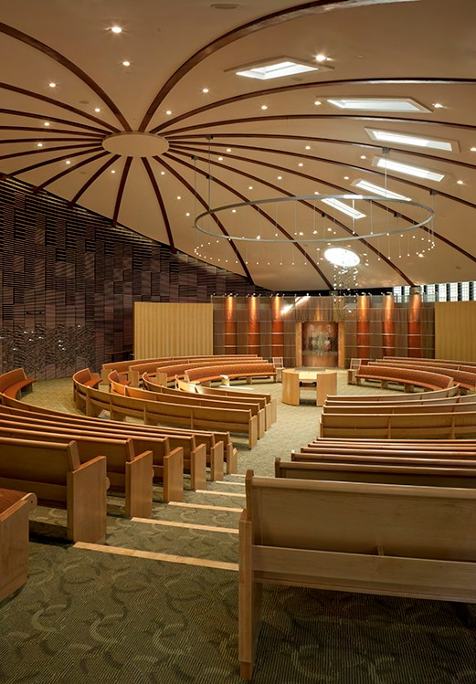
Beit Knesset / Congregation Kol Shofar, Tiburon CA, Herman Coliver Locus Architecture
In this seder plate, the central theme of Passover‐‐emerging from slavery into freedom‐‐is expressed by the separation of foods representing those two states.
The foods of slavery rest on a lower level, set into a heavy limestone slab. In stark contrast, the foods of freedom are elevated on a shimmering brass disc, evoking the higher spiritual plane of the Israelites in the desert. The elements are separated by a channel of salt water symbolizing the Red Sea.
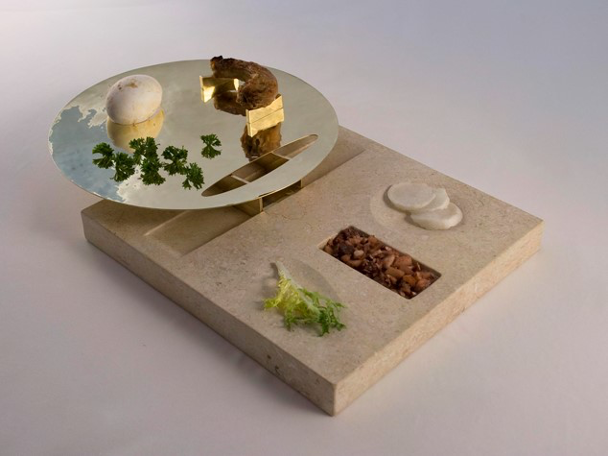
Slavery to Freedom Seder Plate. Amy Reichert Architecture + Design
III. Embodied Stories
While the hermeneutical tradition in Judaism has been essentially text‐based, we propose opening up that body of legal, poetic, and narrative material to visual inquiry. Our designs embody stories, both our own and those recorded by our ancestors. Texts can be drivers of form by interweaving personal, shared, and traditional narratives.
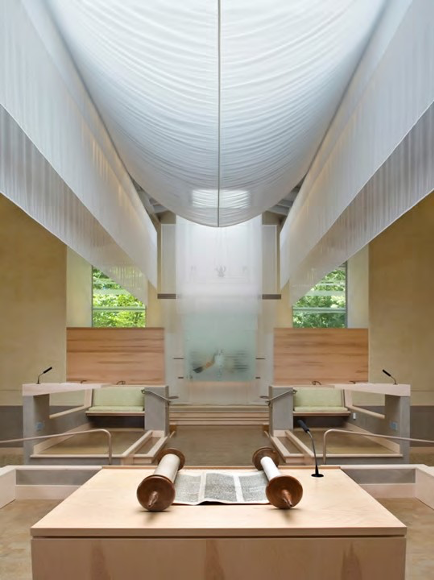
Facing East, Bima detail / Congregation B’nai Israel, Sacramento CA. Herman Coliver Locus Architecture
Process
Our presentation and interaction with session participants will include a discussion of our creative processes. Amy Reichert begins the design of each new piece of Judaica by assembling and studying classical texts (Torah, Talmud, Midrash) and modern interpretations of those texts in order to develop a new program that will inform the design and materials. Before putting pencil to paper, Susie Coliver observes typical services within the congregation’s existing facilities. By sensing the flow of energy, the movement of people, the relationship between clergy and congregant, where families tend to gather, the way the more frail are accommodated, the role music/singing plays, and many other indicators of the group dynamic, she can begin to craft an approach tailored to the culture of each institution.
Conclusions
There is a core Jewish value known as “hiddur mitzvah” which is usually translated as
“beautifying the commandment.” We prefer instead the alternate and much richer translation by Onkelos (1st century Roman translator of the Torah), “inhabiting the commandment”. Rather than aesthetic considerations being added to an item to dress it up, we seek to provide pathways via design for commentary and interpretation that reflect a deep and expansive engagement with the transcendent.
Abraham Joshua Heschel. The Sabbath: Its Meaning for Modern Man (New York: Farrar, Straus and Giroux,
1951)
Nancy Berman. Moshe Zabari: A Twenty-Five Year Retrospective (New York: Jewish Theological
Seminary,1986)
Frank Ephraim Talmage. Apples of Gold in Settings of Silver: Studies in Medieval Jewish Exegesis (Toronto:
Pontifical Institute of Mediaeval Studies, 1999)
Peter Knobel, (ed.). Gates of the Seasons: Shaarei Mo-Eid: A Guide to the Jewish Year (New York:
CCAR, 1986)

